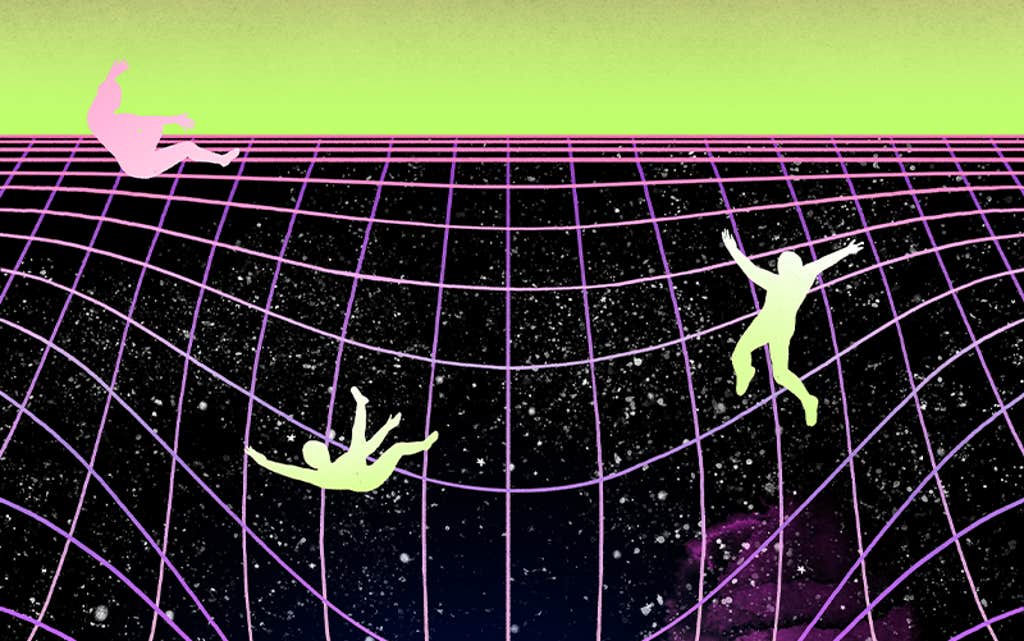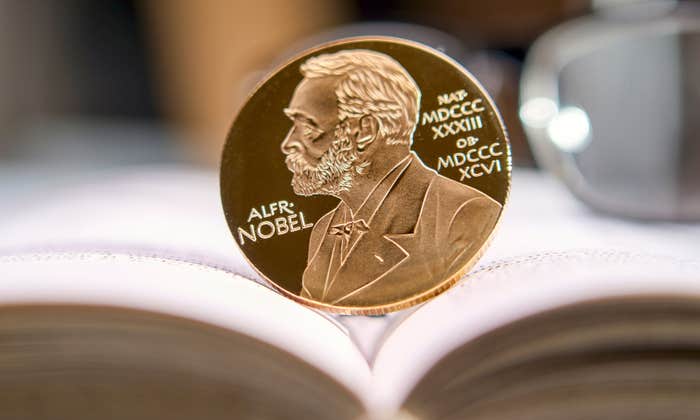As ever, our writers and scientists this year took you to places where splendor and surprise abound, and shaped their discoveries into stories that allow you to experience the world anew. Enjoy these passages below.

“There’s information,” the librarian said, “and then there’s the right information.”

By making documentaries that allowed people on their couches into the underwater world, Donald Nelson began to change people’s minds about sharks. A deadly, despised predator with a face full of teeth began to seem vulnerable, even elegant, a critical choreographer of the ocean ecosystem.

Contemporary scientists may cast aspersions on spells, mythical tales, and powers of divination. Not so for the early modern thinkers who laid the foundations of modern science. To them, the world teemed with the uncanny: witches, unicorns, mermaids, stars that foretold the future, base metals that could be coaxed into gold or distilled into elixirs of eternal life.


Please excuse me for being excited, but this hasn’t happened for more than four decades: Physicists have found a new approach to solving a problem which is almost a century old—how to combine quantum physics with gravity.

On the top of Mount Everest, in the Mariana Trench, in the human placenta, and babies’ feces: Plastics are everywhere. They are built to last and last they do: A plastic bag can endure for 20 years in the environment, and a disposable diaper, soiled or not, up to 200.

If you listen to happy music, that’s just another bunch of people who misunderstand how you feel. You’ve got no use for them. But, put on the right sad music, and you feel understood and validated.

One of my favorite arguments for the existence of God—I think that none of them are any good—but my favorite is that the constants of nature in the universe allowed for the existence of very complex structures such as us. As a physicist, I actually do buy the argument.


Given the chameleon nature of our memories, changing their colors to suit different environments, do we ever see anything for what it is, remember it for what it was? Is this the real life? Is this just fantasy?

One morning, while kayaking, the true vastness of Antarctica really hit me. As I wrestled my paddle through the current, feeling the pull and the chop, I was struck by how small, how insignificant I was in this massive desert of ice mountains. It might not seem like much, to collect water, plankton, and plastics. A drop in the ice bucket, as it were. But it is only through these drips and drops of data that we’ll ever learn the nature of this mysterious place.

Gutsy. Bloody-minded. Irresponsible. Devious. Cavalier. Reckless. Tough. There’s a Nobel Prize for each of those characteristics.


Asteroid detection and defense may never have got off the ground were it not for a handful of scientists who were obsessed by the night sky flotsam. Someday, if the big one comes, and we stop it, we can trace saving the world to the hobbyists.

Something magical happens when a scientist writes with chalk on a blackboard. They have thoughts that wouldn’t come if they just stood there with their arms folded.

I was surprised by the public response to the Hollywood actor Cary Grant’s reveal that he was regularly using LSD in psychedelic therapy sessions. The journalist who broke the story was overwhelmed by phone calls and letters: “Psychiatrists called, complaining their patients were begging them for LSD.”

On a blazing morning, I paddled my surfboard into a caramel-colored sea off a beach in Brazil, hoping to catch a wave with its own individual rights. The wave rose up against the wind as if in greeting, its perfect peak of foam resembling the enigmatic smile of a new friend.


As a theoretical physicist, my job is to work out how all of reality works. But I must confess to an increasing sense of uncertainty, even bafflement. Perhaps reality is genuinely unknowable: Things exist and there is a truth about them, but we have no way of finding it out.

Star Trek’s best episodes were written by people who understood that you can’t get to that shiny happy hi-tech future until we change first and prioritize things like making sure everyone eats and gets a decent education. This is why some of the best predictive science fiction has been written by writers from marginalized groups, and by anyone else who’s had lived experience of society’s uglier paradoxes.

Tree leaves are nowhere near as efficient at turning the sun’s light into energy as giant clams.

Dr. No survived because his assassin quite reasonably assumed the heart would lie to the left, but his victim was among the tiny fraction of people who are born with their organs reversed. How our organs take on these asymmetrical positions is among the most fascinating questions in developmental biology.

Flickering dots and smudges of light everywhere, fuzz and static blanketing my visual field, blurring the edges of my reality. For as long as I can remember, this is what I have seen when I look out onto the world. It is as though someone tuned a television inside my head to an unreachable channel, and it got stuck there, or I became permanently submerged in a child’s snow globe.


Suddenly a veil unfurls and the world seems unreal. The same furniture is in the living room. The same trees are outside turning shades of gold in the sun. But it’s all not quite … right.

Charles Darwin and Emily Dickinson witnessed the separation of science from art, but they did not accept it for themselves. They resisted disenchantment. Both were fascinated by the invisible, mysterious, and magical interconnections that tie living things together.

Though the tree seems so radically different from me, so strange at times, I remember that we travel together in this spinning dance around our star, the sun that makes life possible and orchestrates the rhythm of our days and seasons, that gives us a pulse.


We student filmmakers in 1965 were being carried like foam on the waves of history, irrespective of what we thought we might be doing—agents of the great unraveling of time and space.

Anyone who’s locked eyes with a 3-month-old baby on a crowded bus has experienced the innate human urge for connection and communication. A child’s earliest language learning is correlated with her ability to follow another person’s eye gaze and coordinate attention with them.

Young crows learn to make different types of tools by stealing their parents’ tools.

Imagine living in an old house for years and finally getting access to a locked basement—only to discover a magical workshop where everything in the world is made. That’s what it was like for geologists to finally get a good glimpse of the mantle, that vast middle layer of Earth.


Woven throughout the centuries is a burning obsession with accessing truth beyond human fallibility—a utopian dream of automated certainty. This has been the seduction of modern computers and artificial intelligence.

We’re not going to deal with the climate emergency or the fracturing of the foundations of democracy unless we can reassert a confidence in human thinking and judgment. And everything in the AI world is working against that.

The mutually beneficial (if sometimes fraught) relationship between people and tech is nothing more or less than our own most recent major evolutionary transition. Technology, then, is not distinct from nature or biology, but merely its most recent evolutionary layer.

The marmalade hoverfly does not fly alone. Some 17 million insects traverse the Pyrenees every fall alongside her.

A small shift in mindset just might help us relate to those who ghost us not as unwanted specters but as a new way to appreciate ourselves—reminders of the many ways we have made ourselves vulnerable, taken a chance, and opened ourselves to the possibility of connection.


It’s 5 billion years from now. The sun is growing unstable, running out of hydrogen fuel in its core. Eventually the core collapses under its own weight, heats up from all that mass squeezing together, and switches to burning another gas, helium. For a few hundred million years, the increase in heat from the main-sequence-star-turned-red giant transforms the icy moons of Jupiter and Saturn into island paradises.

The experience of mathematical beauty excites the same parts of the brain as beautiful music, art, or poetry.

The largest synchronous movement of biomass on the planet happens every night in the ocean, as countless tons of zooplankton rise from the deep up to the surface and sink down again every morning. Fish, crustaceans, and mollusks follow them, covering distances over half a mile in each direction. I had thought of the great living journeys as moving mostly north to south, when in reality it’s up and down.

The Big Bang can explain why the universe is expanding. It can explain the existence of ancient relic radiation. It can explain the composition and arrangement of matter throughout the cosmos. It just can’t explain the element lithium.


I had the typical knowledge that most people get of woodchucks. They’re going to dig holes, ruin your lawn, eat your vegetables and your flowers, and cause your buildings to fall down. But pretty soon I found out that the things I believed to be true, were not.

We use the fruits of our experience—our perceptions and observations—to create models of the world but then turn around and treat our experience as somehow less real than the models. Forgetting where our science comes from, we find ourselves wondering how anything like experience can exist at all. ![]()
Lead collage by Tasnuva Elahi; with illustration by Mark belan, Angie Wang, Ellen Weinstein and photos by Liz Greene, the Shark Lab at California State University and other images by Marcel Drechsler, Ntguilty, G artist, Malte Mueller, fstop Images, Valery Brozhinsky, and Nadia Snopek / Shutterstock.





























